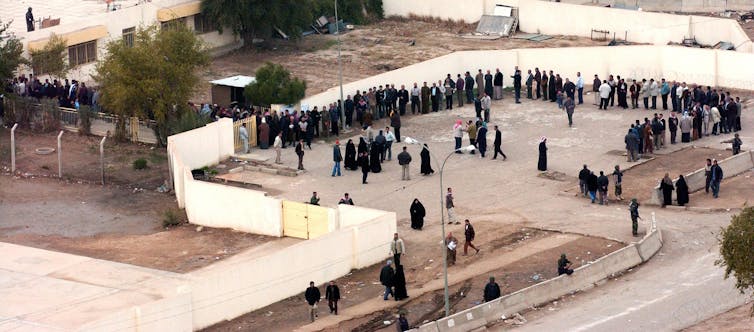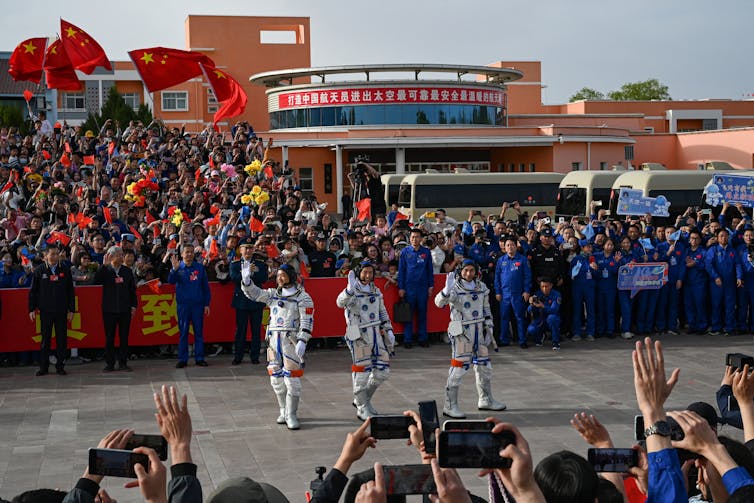Source: The Conversation – USA (3) – By C. Michael White, Distinguished Professor of Pharmacy Practice, University of Connecticut

A “black box” warning on a health product sounds pretty scary – maybe even more so when it’s suddenly being taken off the packaging.
Americans were reminded of this type of public health messaging on Nov. 10, 2025, when the Food and Drug Administration announced it is removing the “black box” warning from hormone replacement therapy for menopause.
But what are these warnings, anyway? What’s their history, and how do they affect a drug’s use?
I am a clinical pharmacologist and pharmacist studying drug prescribing, safety and effectiveness for over 25 years.
Black box warnings – or as the FDA officially calls them, boxed warnings – are a tool for alerting pharmacists and clinicians that the medication may have serious risks. These health care professionals are then expected to communicate those risks to consumers.
An official source of drug information
Black box warnings for particular medications appear on the product package inserts that the FDA requires pharmaceutical companies to create for each prescription drug.
Product package inserts provide official information about the drug to health care professionals. These pamphlets are attached to bulk containers of drugs purchased by pharmacies so that the pharmacist has the most updated official information on the product. The package inserts are also published in textbooks such as the Physician’s Desk Reference and on websites maintained by drug manufacturers.
The requirement for product package inserts came out of a consumer protection law passed in 1966, called the Fair Packaging and Labeling Act, which aimed to prevent unfair or deceptive packaging in products used by consumers.
The package insert carries a set of official information about the drug, provided by the manufacturer and regulated by the FDA. The insert must include who the drug is approved for, proper dosing and administration, and a description of the key clinical trial results that showed it was effective and safe.
It must also disclose any health risks that the drug poses – such as a boxed warning.
Flagging safety risks
The FDA has two categories for the health risks that medications could pose: precautions and warnings. Both are listed on the package insert.
Precautions warn clinicians of possible harm that could result in minor or moderate injury to patients. Warnings, on the other hand, alert them to the potential risk of dangerous adverse events that could result in serious injury or death. The most serious warnings for a drug are called boxed warnings. The text of those warnings is enclosed by a black box on the insert so they will not be missed by clinicians.
According to a 2022 study, more than 400 medications currently carry black box warnings.
Antidepressants are one example. While such drugs can lessen the severity of depression symptoms, researchers have found that during the first few weeks of taking them, patients have an increased risk of suicide – particularly children and young adults. The FDA first issued a black box warning about the drugs’ use in children and adolescents in 2004 and expanded the warning to young adults in 2007.
Another example is clozapine, a drug used to suppress delusions experienced by people with schizophrenia. Although the drug is very effective, the FDA first gave it a black box warning when it was reintroduced to the market in 1989 because it can stop the production of white blood cells, potentially leading to life-threatening infections.
Hormone replacement therapy for menopause got its black box warning in 2003 after a clinical trial called the Women’s Health Initiative pointed to an increased risk of breast cancer without a reduced risk of heart disease in women who used it.
In subsequent years, reanalyses of the Women’s Health Initiative results, as well as data from other studies, have shown that the therapy is safe in women ages 50 to 60. Newer, safer formulations of estrogen and progestin have also emerged. These factors prompted the FDA to remove the warnings in November 2025, saying the therapy doesn’t pose significant risks.
Medical and legal realities
Black box warnings can influence clinicians’ choice of whether or not to prescribe a particular drug. For example, since other drugs for schizophrenia do not carry the serious risks that clozapine does, clinicians usually reserve that medicine for people who could not use those other drugs.
The black box warnings can also play a role in malpractice cases. In some states, package inserts and any warnings they contain can be used to establish a standard of care, leaving clinicians who deviate from them liable for damages. In other states, the warnings they list can be used to support findings of negligence.
For instance, the black box warning on the insert of the drug thalidomide states it can cause birth defects. It instructs clinicians to obtain a
a negative pregnancy test before use and ensure the patient is not able to get pregnant or is taking precautions to avoid pregnancy before prescribing. Failure to do so could make the clinician liable if the person taking the drug bears a child with birth defects.
Product package inserts are living documents. As new information becomes available, the FDA may find a medication’s risk is untenable and request the drug be removed from the market. Or it may decide to remove the boxed warning from the drug if new data shows the drug is less dangerous than previously thought.
![]()
C. Michael White does not work for, consult, own shares in or receive funding from any company or organization that would benefit from this article, and has disclosed no relevant affiliations beyond their academic appointment.
– ref. What’s a ‘black box’ warning? A pharmacologist explains how these labels protect patients – https://theconversation.com/whats-a-black-box-warning-a-pharmacologist-explains-how-these-labels-protect-patients-269470















